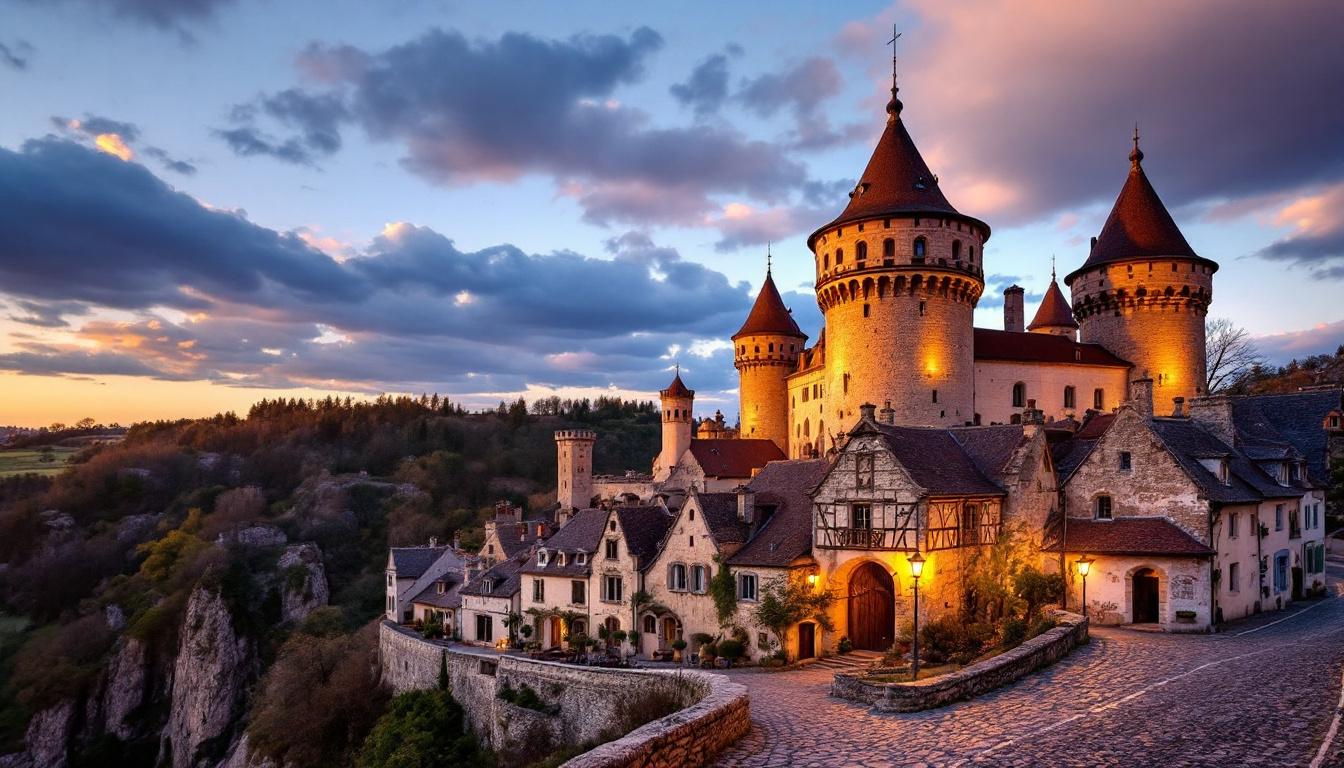This tiny French village might be France’s best-kept medieval secret – with a 15th-century castle that rivals the more famous Loire Valley châteaux, but without the crowds. Tournemire, officially recognized as one of “The Most Beautiful Villages of France,” sits perched dramatically above the Doire Valley in the volcanic Auvergne region, offering visitors a genuine step back in time.
A village shaped by noble rivalry
Tournemire’s fascinating history revolves around a fierce rivalry between two powerful families – the Tournemires and the Anjonys. In the 15th century, Louis d’Anjony, a loyal companion to Joan of Arc, built the imposing Château d’Anjony that still dominates the village skyline today. This medieval drama plays out in the village architecture, where homes built from the stones of the dismantled Tournemire castle stand as silent witnesses to centuries-old power struggles.
The fortress that housed Joan of Arc’s companion
The star attraction is undoubtedly Château d’Anjony, an impressive 15th-century fortress featuring four round towers with distinctive pepperbox roofs. What makes this castle truly special is that it’s been owned by the same family since its construction around 1430.
“Our castle contains some of the finest preserved medieval frescoes in central France,” explains the current Anjony descendant who guides visitors through the family home. “The religious scenes in particular offer a rare glimpse into 16th-century artistic expression.”
A thorn from Christ’s crown in a village church
The 12th-century Romanesque church of Saint-Jean-Baptiste holds an extraordinary relic – reportedly a thorn from Christ’s Crown of Thorns. This precious artifact was brought back during the First Crusade by Rigault de Tournemire. The church itself, originally the private chapel of Tournemire’s lords, features colorful 16th-century frescoes and has been a registered historical monument since 1944.
Exploring a medieval time capsule
Tournemire’s charm lies in its authentic preservation. The village consists essentially of a single street that can be explored in just 15 minutes, yet each stone building tells a story. Many houses rest on ancient Roman foundations, creating an architectural palimpsest spanning two millennia. Unlike some overhyped destinations, Tournemire offers genuine medieval atmosphere without manufactured tourist traps.
Natural wonders surrounding the village
The village’s setting is equally captivating – perched on the edge of the Natural Park of the Auvergne volcanoes. Hiking trails wind through the surrounding landscape, offering panoramic views of the Doire Valley. The region’s volcanic history has shaped not just the terrain but the village itself, with many buildings constructed from local volcanic stone.
If you enjoy discovering places where authentic cultural experiences still exist, you might also appreciate this Japanese city that combines European architecture with ancient temples.
The village that time forgot
Tournemire’s golden age came in the 19th century when it supported a population of 628 residents with thriving local industries including copper work, shoemaking, and cloth weaving. Today, with barely 120 inhabitants, the village feels frozen in time. There’s just one restaurant and two small tourist shops – a refreshing contrast to overcrowded tourist hotspots.
“The beauty of Tournemire is its authenticity,” says Marie Dupont, a local historian. “Nothing here is staged for tourists. What you see is a real French village that has preserved its medieval character through centuries.”
Practical tips for visiting
The castle is only visitable through guided tours (available February to mid-November), and car access inside the village is restricted to preserve its pedestrian-friendly atmosphere. For history enthusiasts, Tournemire offers a perfect companion to other historically significant European sites.
While accommodations in Tournemire itself are limited, nearby options in the Cantal region provide comfortable bases for exploring this hidden gem and the surrounding less-traveled yet remarkable destinations of central France.
Standing in Tournemire’s single medieval street, watching golden light illuminate the volcanic stone facades while the fortress towers loom above, you experience something increasingly rare in our world – a place where history hasn’t been reimagined for tourism, but simply preserved through the quiet passage of time.
